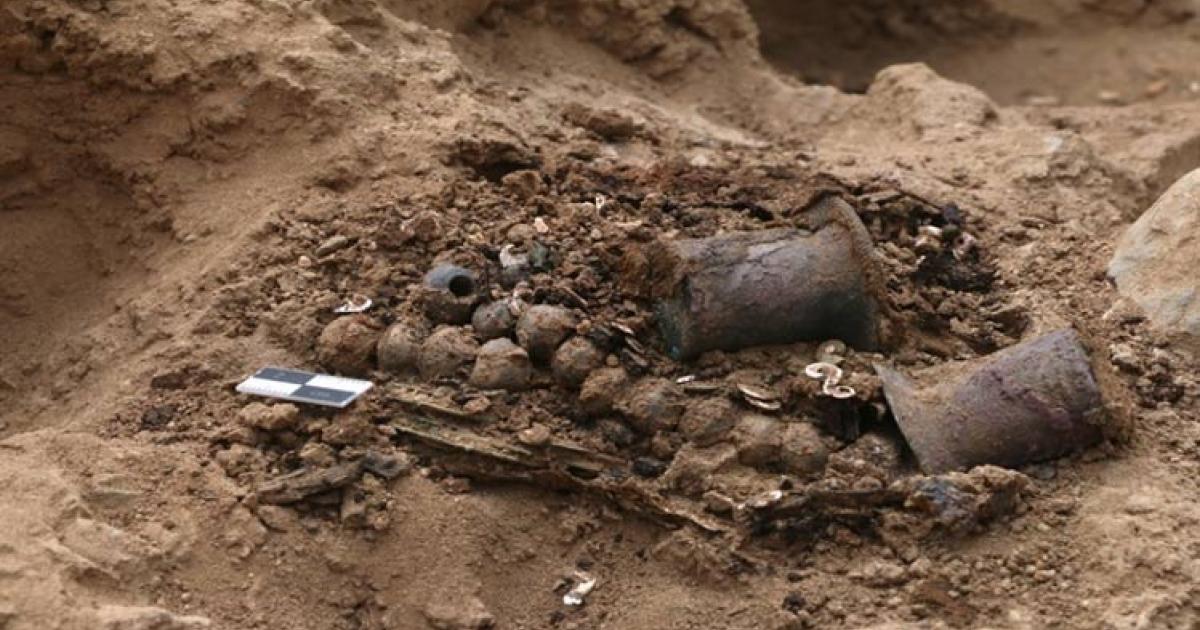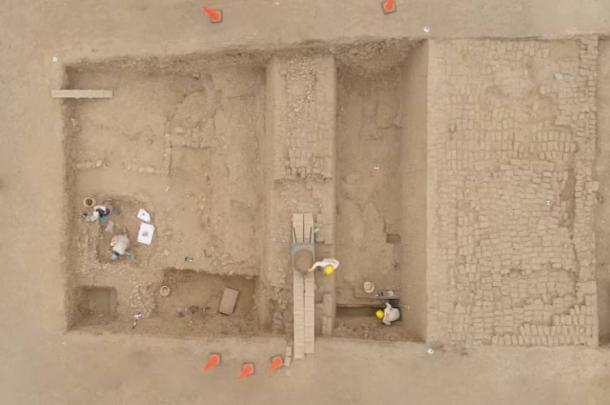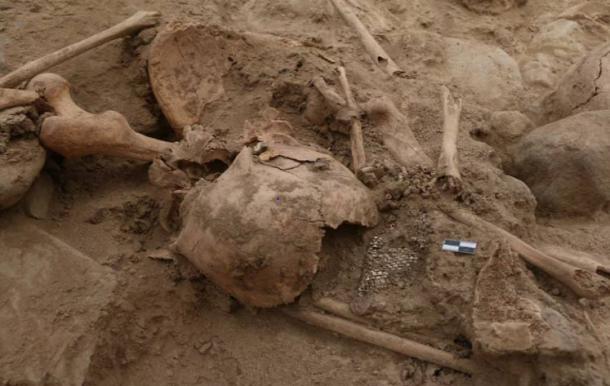Introduction
The Chan Chan Archaeological Complex in Peru has long been a treasure trove of insights into the ancient Chimu civilization. Recently, a team of researchers has made a remarkable discovery that sheds new light on the elite class of this pre-Inca society. Uncovering the bone remains of 11 individuals, along with an array of ornate artifacts, this finding offers a tantalizing glimpse into the lives and status of the Chimu’s governing class.

The Unearthing of Chimu Elites
The excavation, led by Sinthya Cueva, the Director of the Restoration project for the perimeter walls of the Utzh An complex, took place at the foot of the northern sector of the walled Utzh An complex, also known as the former Gran Chimú Palace. The remains, dating back approximately 800 years, were found alongside a treasure trove of artifacts that suggest these individuals held significant administrative positions within the Chimu hierarchy.
Among the discoveries were three pairs of earmuffs, two bead necklaces, and Spondylus (thorny oyster) shells – all items strongly associated with high-ranking members of Chimu society. “These were probably members of the Chimu’s governing class,” Cueva said, pointing to the adornments found with the skeletal remains.

Insights into Chimu Culture and Society
The Chimu civilization, which thrived along the coastal plains of northern Peru from around 800 AD to the late 1400s, was renowned for its exquisite artistry, innovative agricultural techniques, and extensive trade networks. The discovery of these elite burials at the Chan Chan Archaeological Complex provides valuable insights into the social structure and power dynamics of this ancient society.
The Chimu were a highly stratified culture, with a clear hierarchy that separated the ruling class from the common people. The presence of these ornate artifacts, such as the earmuffs and Spondylus shells, suggests that the individuals buried here held positions of significant authority and influence within the Chimu government and administrative system.
Furthermore, the location of the burials, at the foot of the perimeter wall in the northern sector of the walled Utzh An complex, indicates that this area may have been repurposed as a burial ground after the site was abandoned. This provides insight into the Chimu’s funerary practices and the importance they placed on honoring their elite members, even after the site’s primary function had changed.

The Ongoing Investigations and Future Discoveries
The excavation at the Chan Chan Archaeological Complex is part of a larger restoration project focused on the perimeter walls of the Utzh An complex. Cueva noted that the skeletal remains were found in a disturbed state, indicating that the burials had been disrupted over time. Further analysis and investigation will be necessary to determine the cause of this disturbance and to uncover any additional insights into the lives and deaths of these Chimu elites.
Cueva also expressed optimism about the potential for further discoveries during the ongoing eight-month excavation. Previous investigations conducted in 2017 and 2022 have already yielded significant Chimu artifacts, and the team remains hopeful that more treasures from this ancient civilization may still be waiting to be uncovered.

Conclusion
The recent discoveries at the Chan Chan Archaeological Complex have provided a remarkable window into the lives and status of the Chimu elite. The unearthing of these 11 individuals, adorned with ornate artifacts, offers a tantalizing glimpse into the power structures and cultural practices of this pre-Inca society. As the restoration project continues, researchers are poised to uncover even more insights that will deepen our understanding of the Chimu civilization and its enduring legacy.

